She's an animal! He's an animal! YOU'RE an animal! We're all animals! Learn more about all kinds of animals (including humans) here!
Full book of lesson plans: 2021 SRP Library Lesson Plans Full Book.pdf (tulsalibrary.org)
- Unlikely Animal Friends
- Emperor Penguin Writing Work
- Monkey See, Monkey Write
- Book of Amazing Animals
- Frogs in Fact & Fiction
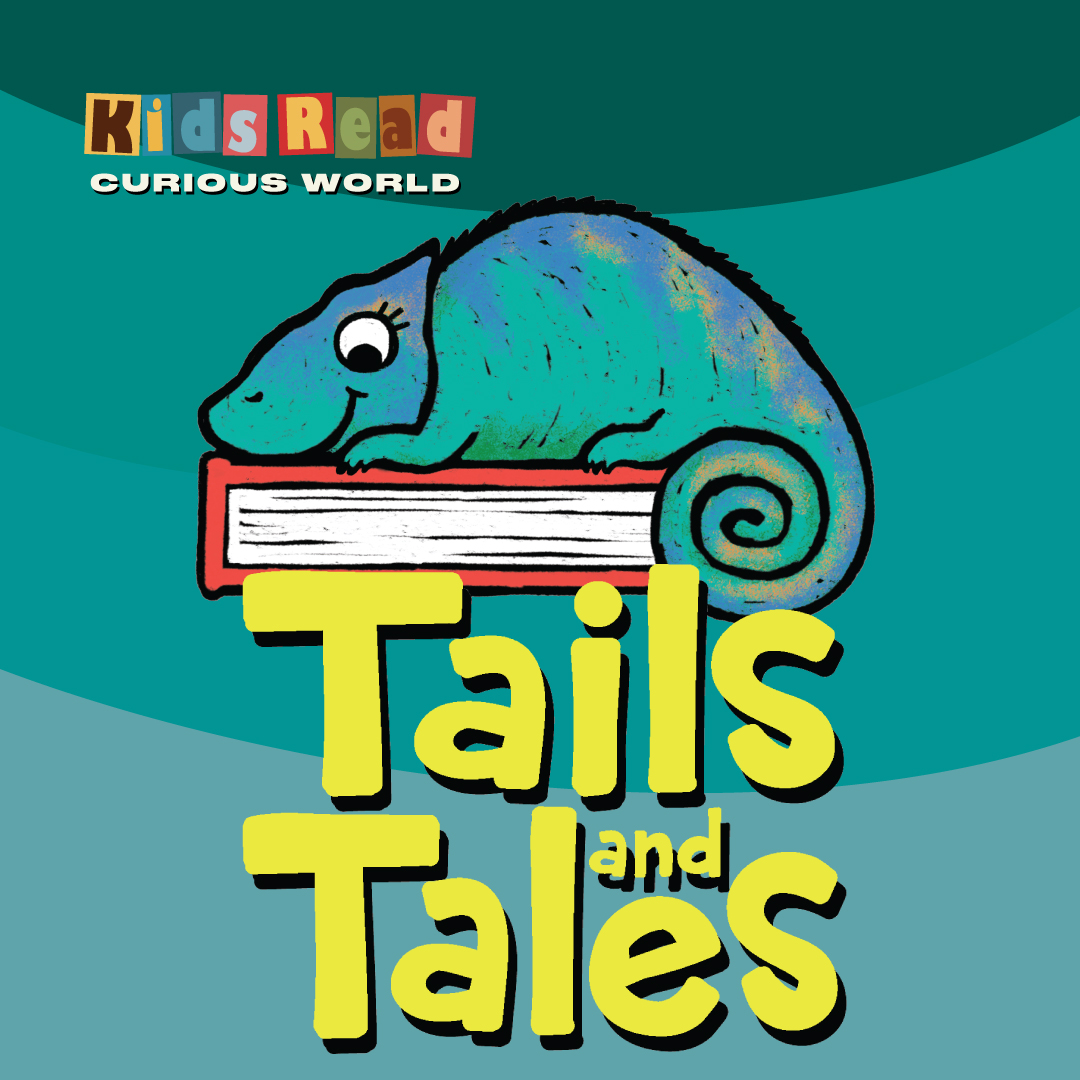
What Curious Creatures Will YOU Write About?
What are your favorite animals? What animals would you like to learn more about? This summer, create a book of “Curious Creatures” like this young writer and artist named Elizabeth! After reading several books about animals (which she found at the library!), she decided to draw pictures and write sentences about peacocks, hamsters, cats, flamingos, sloths, and parrots.
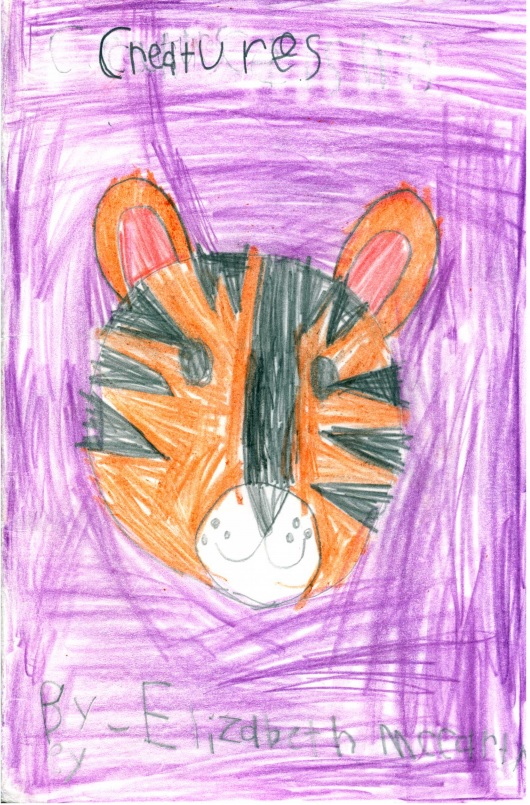
Elizabeth's Creatures: Cats
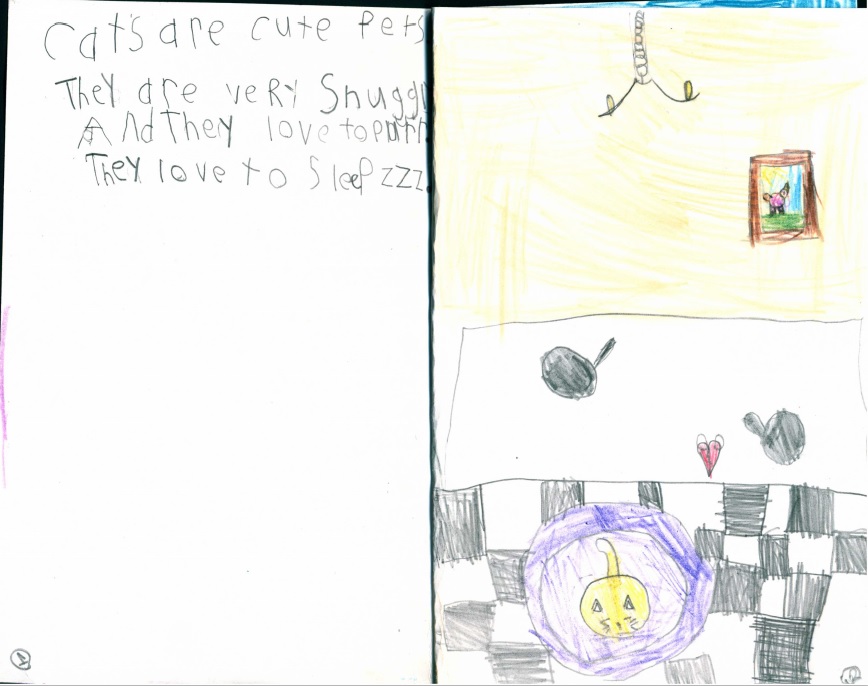
Cats are cute pets. They are very snuggly. And they love to purr. They love to sleep - ZZZZ.
Elizabeth's Creatures: Flamingos
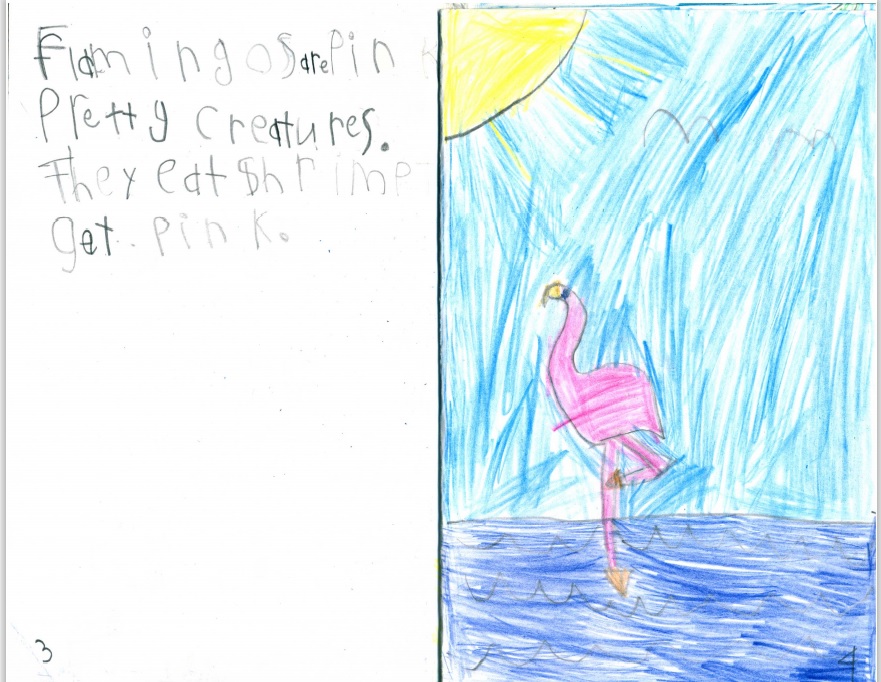
Flamingos are pink and pretty creatures. They eat shrimp to get pink.
Elizabeth's Creatures: Guinea Pigs
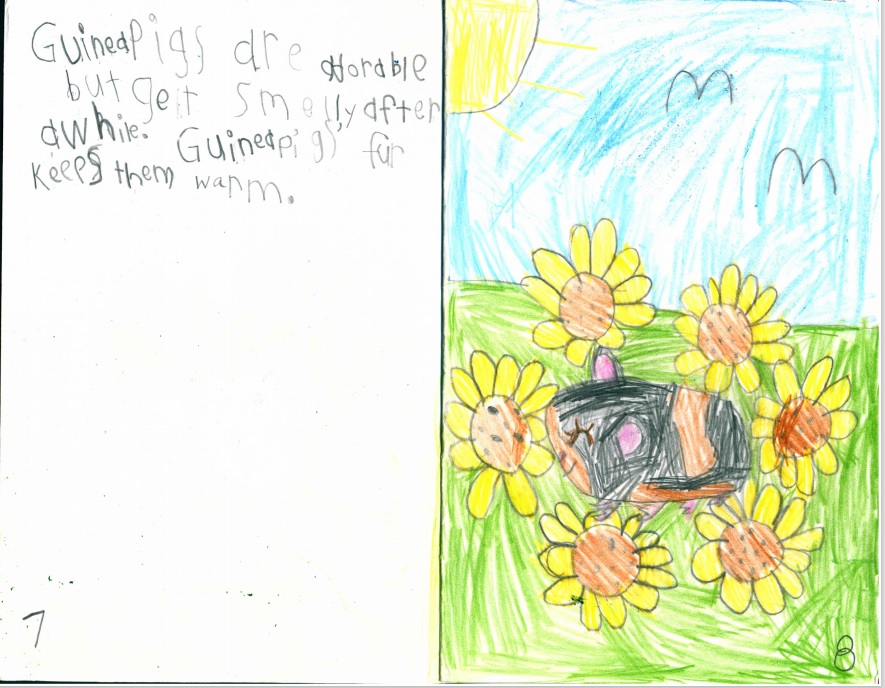
Guinea pigs are adorable but get smelly after awhile. Guinea pigs' fur keeps them warm.
Elizabeth's Creatures: Sloths
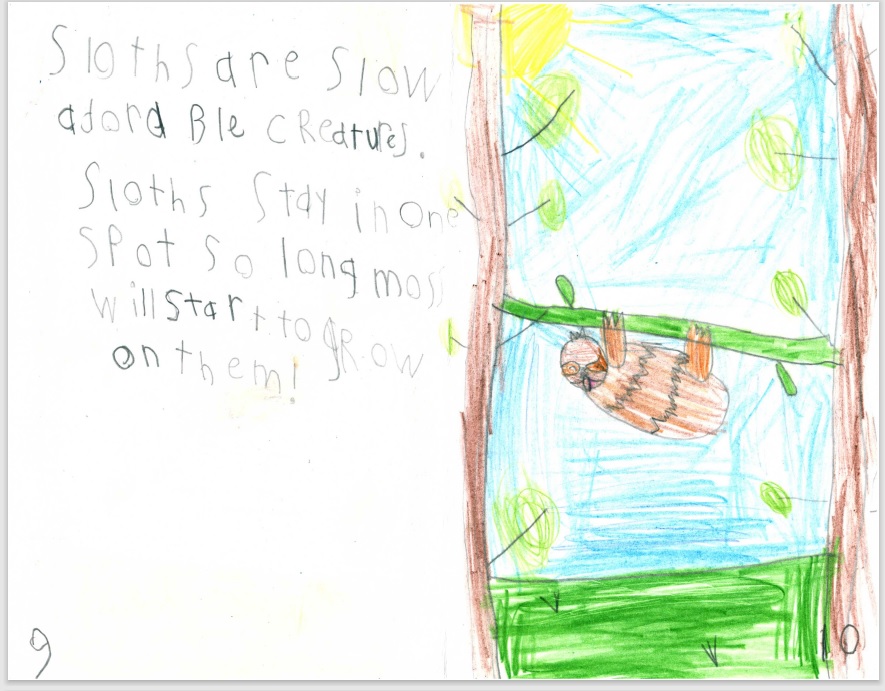
Sloths are slow adorable creatures. Sloths stay in one place so long moss will start to grow on them!
Elizabeth's Creatures: Pandas
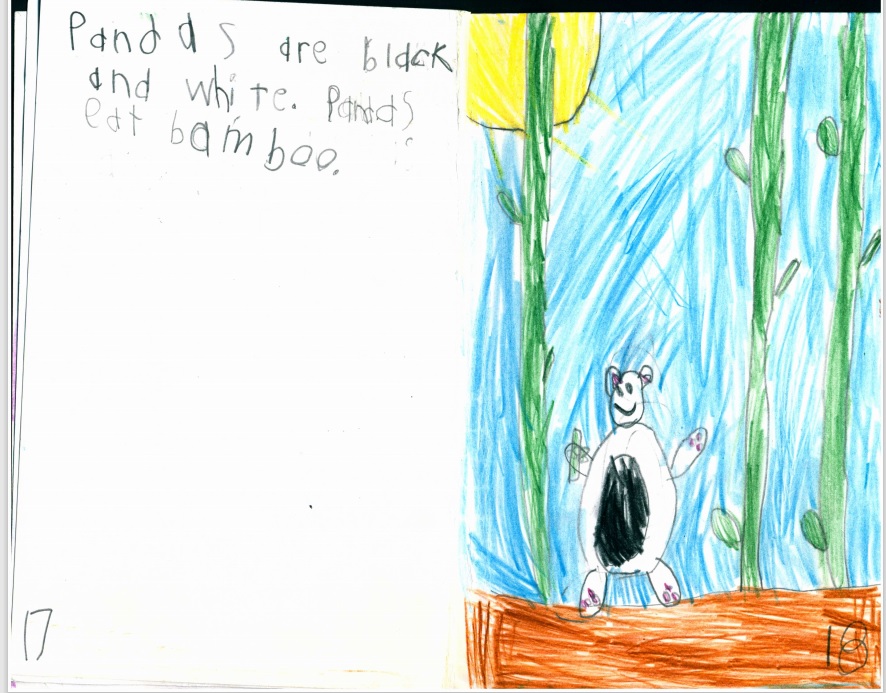
Pandas are black and white. Pandas eat bamboo.
Elizabeth's Creatures: Parrots
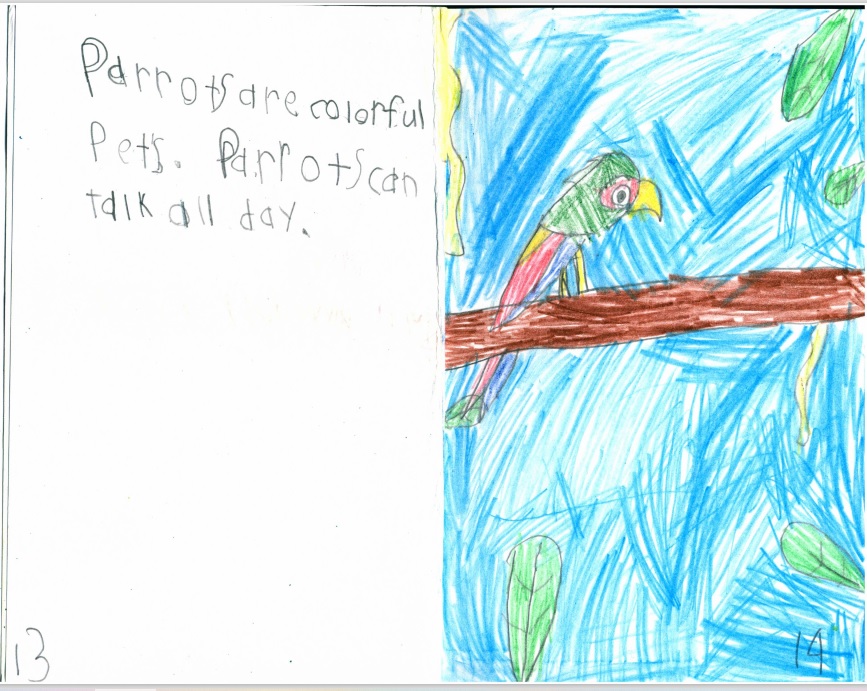
Parrots are colorful pets. Parrots can talk all day.
Elizabeth's Creatures: Hamsters
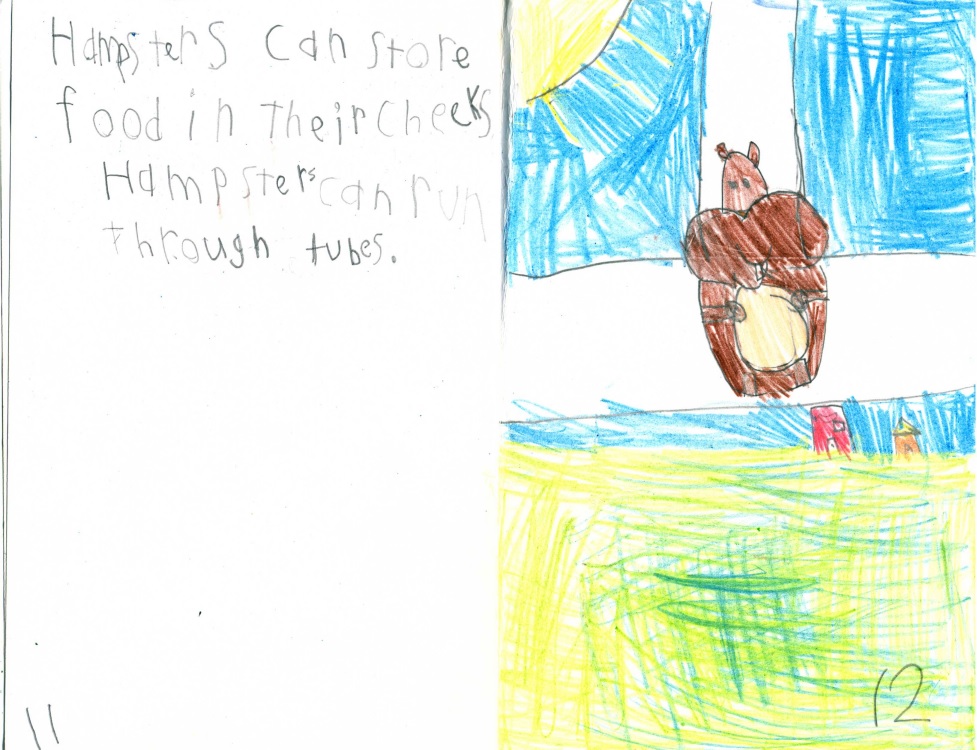
Hamsters can store food in their cheeks. Hamsters can run through tubes.
Elizabeth's Creatures: Turtles
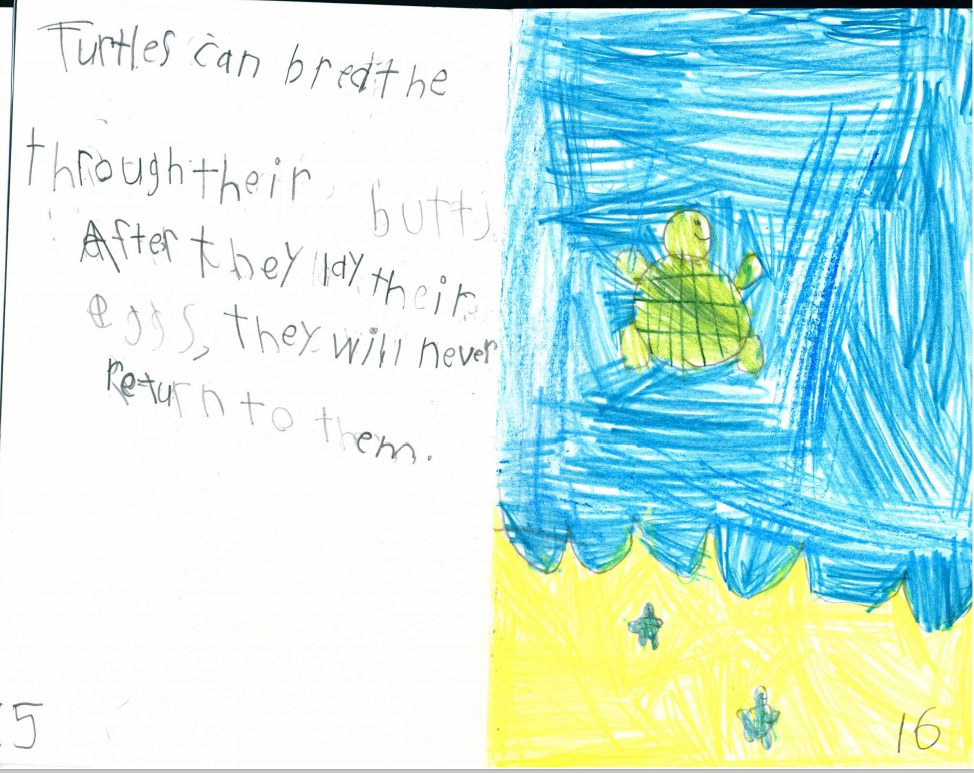
Turtles can breathe through their butts. After they lay their eggs, they will never return to them.
Kids Read Curious Detective: Tails & Tales
You want to learn about animals, but where do you start? Are you a "just the facts" Curious Detective reader? This list is for you!
Kids Read Connector: Tails & Tales
If your favorite books follow realistic characters and stories, you are a Connector, and this list connects Connectors and animals!
Kids Read Magic, Dragons, and Swords: Tails & Tales
Do you love reading books with magic, dragons, and swords? These books feature animals both real and made-up (including dragons!) and are perfect for you.
Kids Read Class Clown: Tails & Tales
What's funnier than animals? This list of books is perfect for the kid that loves to laugh and is interested in funny animals.
Kids Read Adventure Time: Tails & Tales
This list is perfect for the kid who loves adventure with a side of animals!
Kids Read Serial Reader: Tails & Tales
If you enjoy learning more about characters and how they change over time then you will enjoy these engaging serial reads. This list of books is perfect for the kid that loves to read series and are interested in animals.
Are Bugs Animals?
The easy answer is YES! Insects and spiders are part of the Animal Kingdom, though, unlike mammals, they are classified as “invertebrates” – they don’t have a backbone inside their bodies. Other invertebrates include creatures like jellyfish, worms, and starfish.
What Is An Invertebrate?
There are two main types of animals: vertebrates and invertebrates. Humans and animals like dogs and cats are vertebrates, which means we have an inside skeleton, or bones inside of our bodies. Invertebrates are animals that don’t have bones inside of their bodies.
Some invertebrates include:
- Echinoderms – spiny sea creatures like starfish and sea urchins
- Crustaceans – sea creatures like lobsters and crabs with many legs and two sets of antennae
- Arachnids – spiders! Eight legs and two body parts
What Makes a Mammal?
Mammals share some common characteristics like:
- Warm-blooded
- Breath through lungs
- Body hair
Human beings (like YOU!) are mammals, but so are lions, monkeys, and rats!
Warning: Only Read This If You Want to Make Your Brain Work Hard
It’s fun to learn about individual animals, but can you think about the larger qualities and characteristics that all animals share? That takes a little bit more brain power!
Read the following description of what makes all animals the same, then see if you can find books and articles about animals to learn even more. You don’t have to be a genius, but you do have to be willing to ask your brain to do some hard work!
All animals have special body structures that help them survive wherever they live by allowing them to defend themselves, to move, and to gain resources like food and water.
Structures for Defense
Some animals have horns or claws to make direct attacks against predators, while others have shells or poison sacs that protect them. Have you ever watched a cat puff up their fur and arc its back? That’s an example of a defense structure because it helps the cat appear larger than it really is in order to warn off enemies!
RESEARCH: Ask your friendly librarian to help you find books or articles about how animals use their unique defense mechanisms. Start with STARFISH, POISON DART FROGS, SKUNKS, and OPOSSUMS. You won’t believe how they protect themselves and survive!
Structures for Movement
Read “Swim, Leap, Crawl, Fly, Run!” to learn about how different animals’ bodies help them move. Every animal has different body parts that allow them to move around in their environments and survive.
THINK: If you could have any animal’s movement structures, what would you choose? The powerful wings of an owl? The delicate legs of a tarantula? Why?
Structures To Obtain Resources (Get Stuff)
Animals have to eat! (That includes you – don’t you like having lunch every day?) Because they can’t make their own food and must find plants or other animals to eat, they have body structures that help them find and consume food. For example, teeth, jaws, tentacles and fangs all help different animals chew and hold on to food as they eat.
READ: Find a cookbook for kids at the library and read the different recipes for one you think you might want to make – and eat!
LEARN MORE! Find books about animals’ unique defense mechanisms with the subject heading “Animal Defenses – Juvenile Literature” in the library’s catalog. Ask a friendly librarian to help you search!
Swim, Leap, Crawl, Fly, Run!
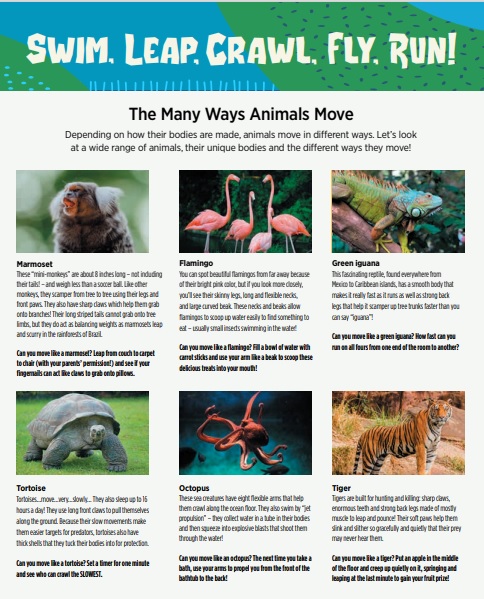
Animal Appositives
“Appositives” are words or phrases that tell you more about a noun or subject. An appositive that describes you could be “smart kid” as in “Javan, a smart kid, loves going to the library!”
Using what you have learned about animals in this guide, match the animal to the correct appositive!
Tortoise A bird with a very long neck
Marmoset A sea creature with eight arms
Flamingo A slow-moving land animal
Octopus One of the smallest monkeys in the animal kingdom
See this ANSWER KEY to find out which appositives go with which animal!
Scrambled Animal Sentences
Can you unscramble these groups of words into sentences that make sense? Read “Swim, Leap, Crawl, Fly, Run!” first to give you the background information you need to do this. HINT: The first word of the sentence is capitalized and in bold and underlined.
1. long have Flamingos and necks flexible
2. help iguanas trunks green Strong back up run tree quickly legs
3. tortoise place from a long It takes time place to for a move to
4. special Beetles move that down up and muscles their have wings
5. ball less a soccer weigh Marmosets than
See this ANSWER KEY to find out the unscrambled sentences!